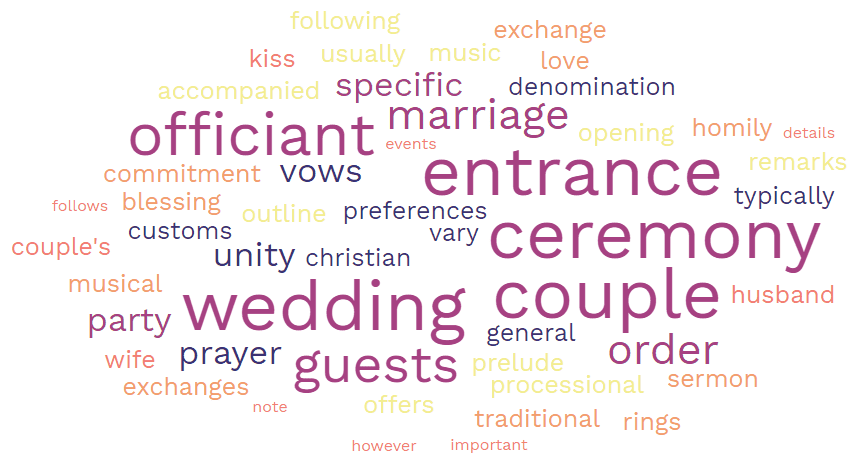
National Association of Christian Ministers How to Series: Weddings
A Christian wedding ceremony typically follows a specific order of events. However, it’s important to note that the specific details and customs may vary based on the denomination, cultural traditions, and personal preferences of the couple. Here is a general outline of the order of a Christian wedding ceremony:
1. Prelude: The ceremony begins with a prelude, which is usually instrumental music played as guests are being seated.
2. Processional: The processional marks the formal entrance of the wedding party. It typically includes the following participants in the following order:
– Seating of the guests’ families
– Entrance of the groom’s parents
– Entrance of the bride’s mother (sometimes accompanied by an escort)
– Entrance of the bridesmaids and groomsmen, usually in pairs
– Entrance of the maid/matron of honor and best man
– Entrance of the flower girl(s) and ring bearer(s)
– Entrance of the bride, accompanied by her father, or another significant person
3. Welcome and Opening Remarks: The officiant welcomes the guests, offers an opening prayer, and shares some introductory remarks about the significance of marriage.
4. Reading(s) and/or Musical Interlude: There may be readings from the Bible or other meaningful texts, as well as musical performances, which can be solo or involve a choir or other musicians.
5. Sermon or Homily: The officiant delivers a sermon or homily, sharing insights and words of encouragement about marriage, love, and commitment.
6. Exchange of Vows: The couple publicly exchanges their wedding vows, either by reciting traditional vows or personalized ones they have written. They express their promises and commitment to each other.
7. Exchange of Rings: The couple exchanges wedding rings as a symbol of their love and fidelity. The officiant may offer a blessing or a prayer during this moment.
8. Optional Unity Ceremony: Some couples choose to include a unity ceremony, such as the lighting of a unity candle, the mixing of different colored sands, or the tying of a knot, symbolizing the joining of their lives.
9. Pronouncement of Marriage: The officiant declares the couple as husband and wife, using traditional phrases like “I now pronounce you husband and wife” or similar variations.
10. Kiss and Presentation: The couple seals their marriage with a kiss. The officiant then presents the newly married couple to the congregation or guests.
11. Benediction: The officiant offers a final blessing or prayer for the couple’s future together.
12. Recessional: The wedding party exits the ceremony area, followed by the guests. Music plays as the couple and the wedding party recesses back down the aisle.
It’s worth noting that this is a general outline, and the specific order and elements of the ceremony may vary depending on the couple’s preferences and the customs of their particular denomination or church.





